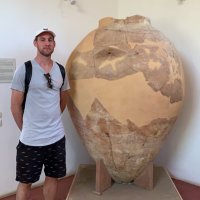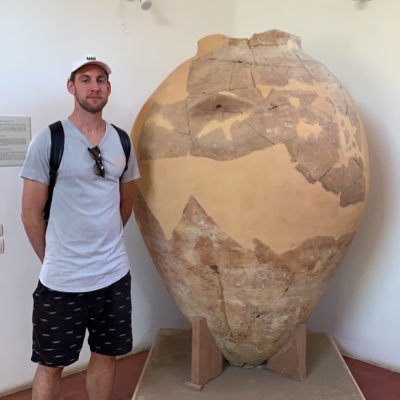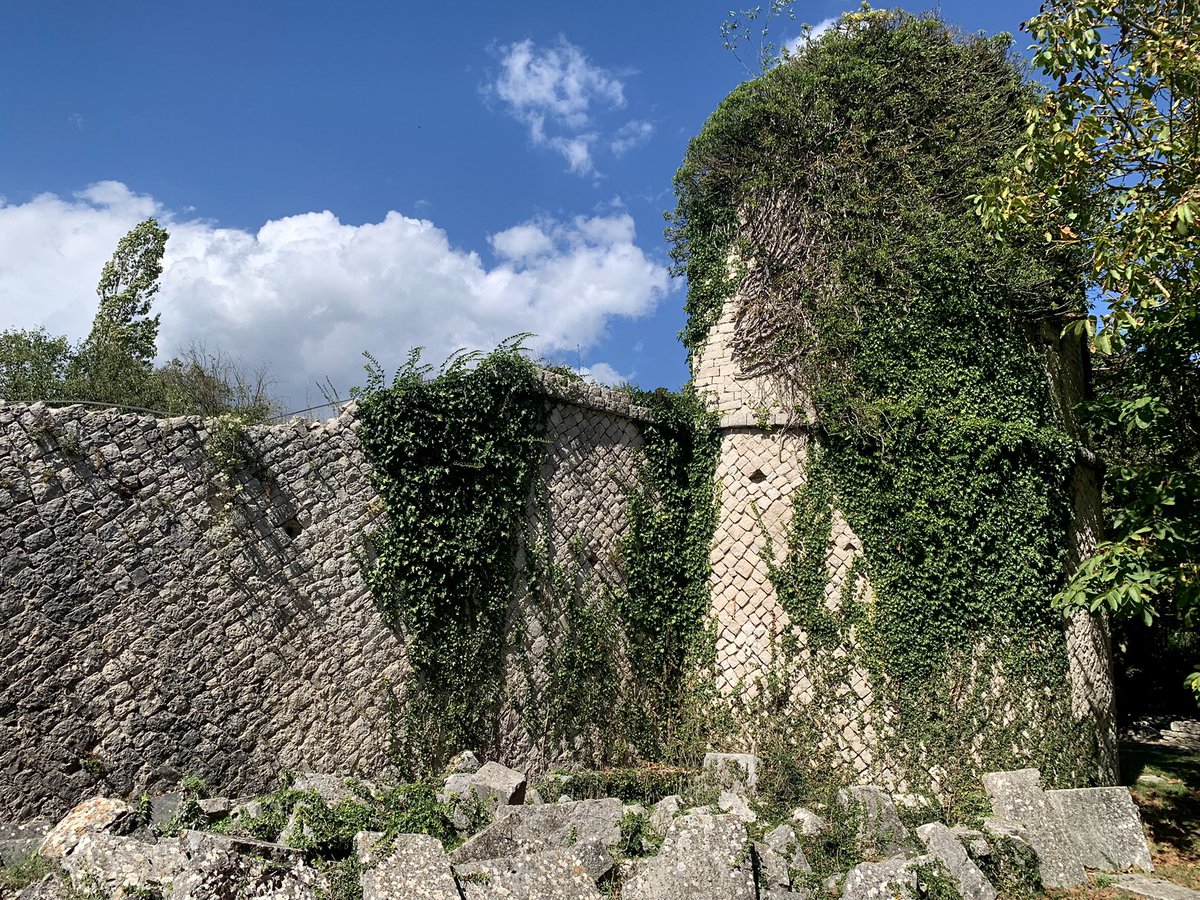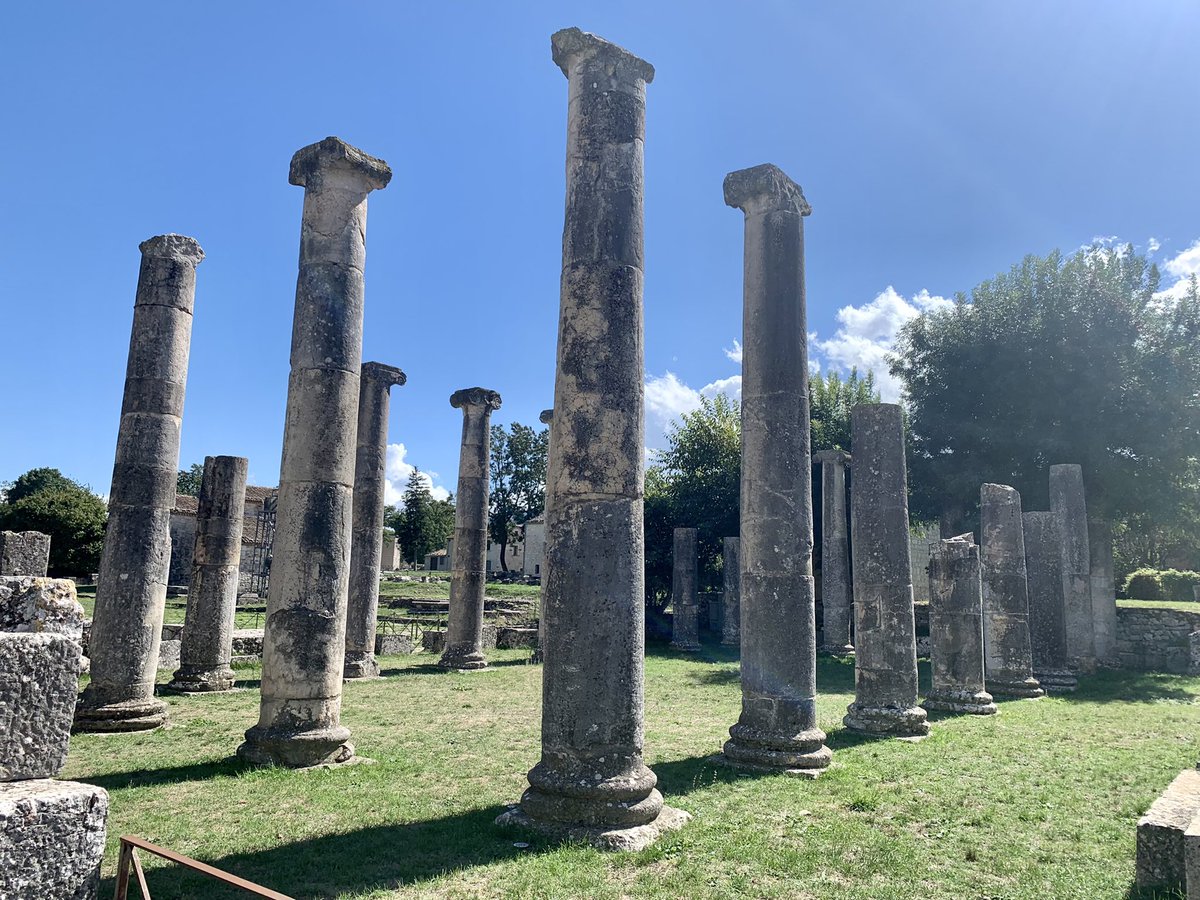
Dr Emlyn Dodd@emlynkd
Sep 22, 2022
9 tweets
Ancient #Roman Saepinum - a city built on a plain at the crossroads of 2 tratture (transhumance routes). Founded after a bloody battle in 293 BCE and the Third Samnite War.
A walking tour…  /1
/1
 /1
/1 The city flourished in the Augustan age, when walls and monumental gates were built - now in various states of preservation & restoration - enclosing an area of 12 ha. The decumanus (cc. @ray laurence 🇺🇦 ROADS!) is as usual lined with shops & houses as you enter the city. /2
Particularly eye-catching is the (restored) Porta Boiano with flanking statues of Germanic warriors in chains & Trajanic inscription commemorating construction ca. 2 BCE-4 CE. Inside the gate another warns local soldiers against harming passing shepherds with imperial herds! /3
The city walls and round towers are in spectacular opus reticulatum, using grey limestone and originally to a height of 5m. (#wallporn in the first tweet for @Dr Sophie Hay but also here with nature) /4
The 3000 seat theatre is beautifully surrounded by 18th c. farmhouses, w/ 2 tetrapyla for audiences to access the main cavea. Remarkably, it has a central emergency exit, which spews audiences directly out of the theatre, through the adjacent city walls, & into the countryside /5
The octagonal courtyard of the #macellum - a marketplace for various food & meat products - is clear, surrounded by tabernae (shops), & an intriguing basin in the centre, prob originally from an olive mill.
The adjacent #basilica has 9 standing columns out of an original 20. /6
Just up the decumanus is a trapezoidal forum, with original paving, including dedicatory inscription with grooves for bronze lettering, & griffin fountain with inscription stating Caius Ennius Marsus & Lucius Ennius Gallus financed it with their own funds. /7
Nearby a water mill & behind a shopfront are four in-ground vats lined with clay bricks, interconnected in descending size order by a small channel. Perhaps for olive oil production, or recently also suggested to be a tannery. /8
And finally, moving forward into the future, medieval and early modern buildings can still be seen inside the city walls, inhabited until recently, and as usual spoliation is rife! /9

Dr Emlyn Dodd
@emlynkd
Assistant Director for Archaeology @the_bsr🏺Ancient wine & oil🍷🍇 Co-director @FaleriiNovi Affiliate @AAIASydney @mq_dha @cachemq FRHistS
Missing some tweets in this thread? Or failed to load images or videos? You can try to .



















